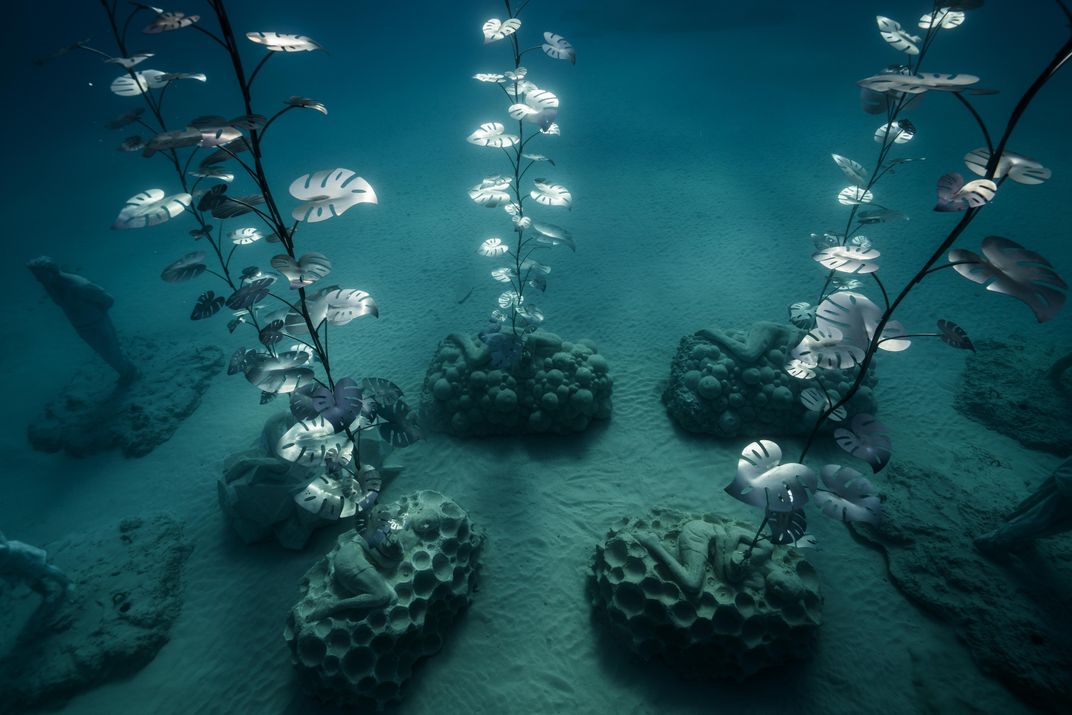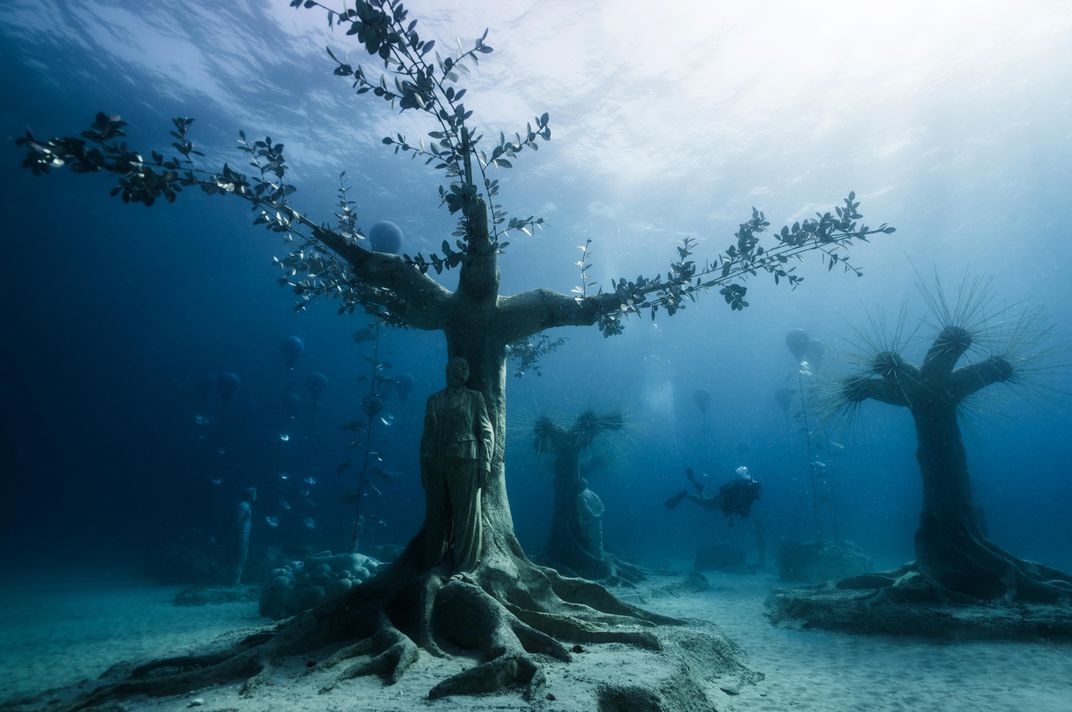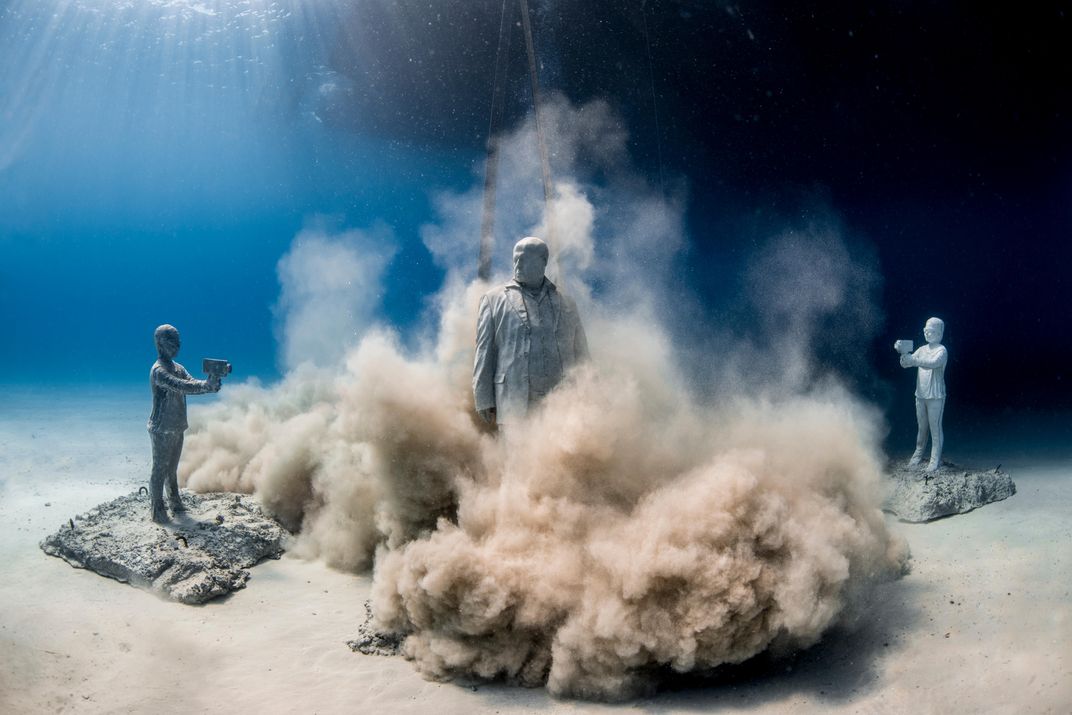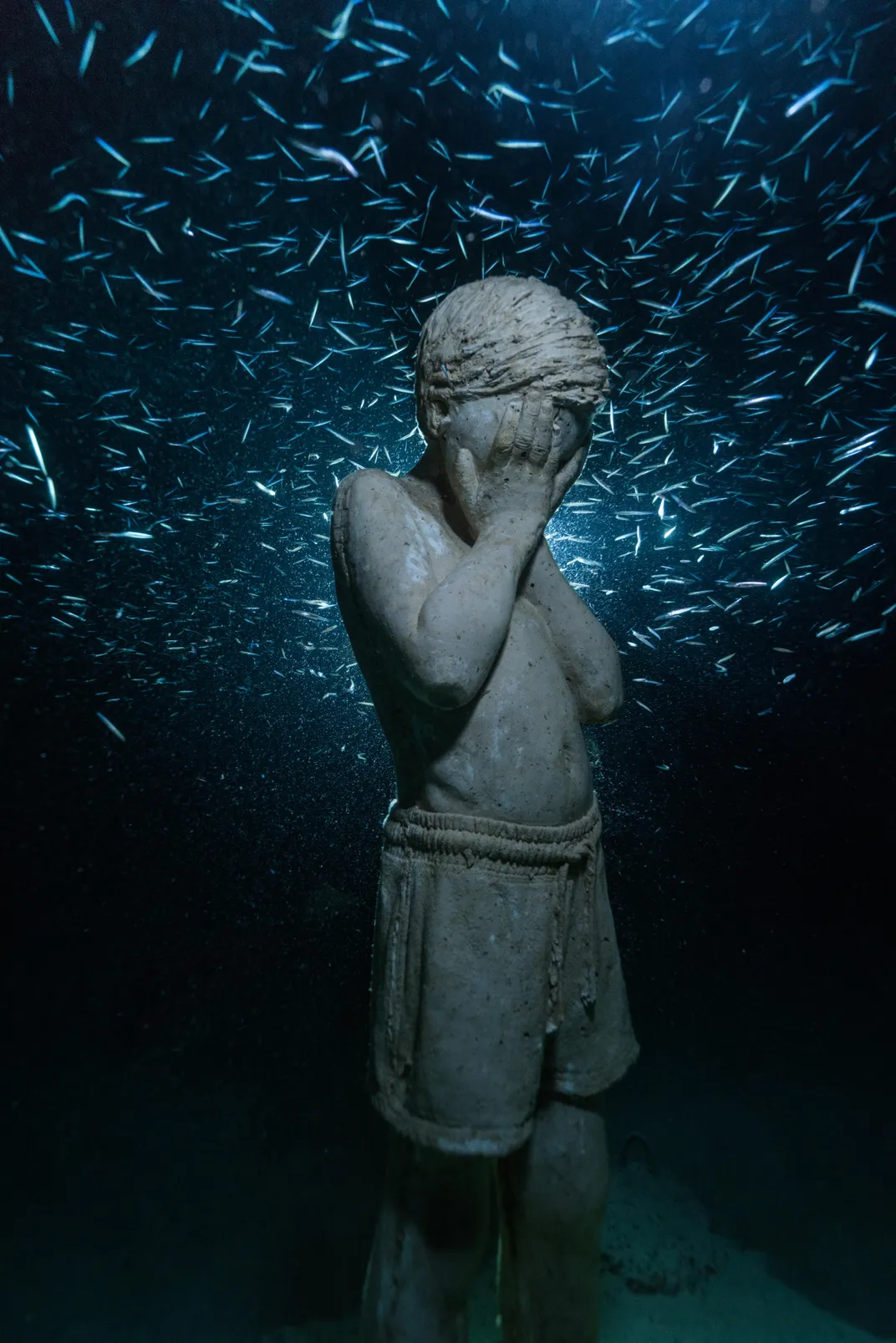You Can Now Explore an Underwater Sculpture Museum in the Mediterranean
Artist Jason deCaires Taylor placed 93 statues of people and plants in a submerged “forest” off the coast of Cyprus
:focal(4104x2514:4105x2515)/https://tf-cmsv2-smithsonianmag-media.s3.amazonaws.com/filer/95/77/957747f9-e2d1-48be-a0f5-84633c9560dd/dsc_1521.jpg)
A fantastical underwater forest has sprouted off the coast of Pernera beach in southeast Cyprus.
Dubbed the Museum of Underwater Sculpture Ayia Napa (MUSAN), the attraction opened to the public on August 2. Per a statement, it features a collection of 93 artworks by British sculptor Jason deCaires Taylor, whose previous projects include submerged museums in Mexico, the Bahamas and France.
As deCaires Taylor tells Alexandra Gillespie of Scuba Diving, he wanted the artificial forest to reference the idea of “rewilding our oceans.” (In conservation, the term rewilding refers to letting nature take care of itself rather than relying on human intervention.) The artist adds that the Mediterranean museum is “similar to kelp forests … [with] vertical structures that float, and I thought that would be quite interesting for attracting marine life at different levels of the water column.”
The site’s sculptures of people and plants stretch across more than 550 feet of sand at depths of up to 33 feet, reports Scuba Diving. According to Time Out’s Sarah Medina, workers lowered deCaires Taylor’s 13-ton fabricated trees into the ocean, creating the illusion of a closely packed woodland. Other sections of the site feature likenesses of children who appear to be running through the forest.
To avoid negatively impacting the marine environment, deCaires Taylor made all of the statues with pH neutral materials. And that’s not all: The forest will actually benefit its surroundings over time. As Time Out notes, the sculptures promote coral growth and will eventually serve as homes for sea creatures.
“They’re designed to sort of let natural growth settle on the substrate,” deCaires Taylor tells CNN’s Tamara Hardingham-Gill. “After five or six days, I could already see a thin film of algae on each of the heads of the sculptures, which have these quite complex habitat areas, and they were already full with little juvenile fish.”
Environmental preservation is a theme that underscores deCaires Taylor’s entire oeuvre. His newest underwater museum—located in an area affected by overfishing and habitat depletion—“speaks directly about climate change and about holding people and corporations to account for their actions,” he tells Newsweek’s Kathleen Rellihan.
Visitors hoping to explore the forest and its organisms up close must book reservations with registered diving schools via the museum’s website. Slots for both scuba diving and snorkeling are available.
“[It] will be a living visual and ecological experience, with works of art interacting with nature and evolving over time,” says Marina Argyrou, director of Cyprus’ Department of Fisheries and Marine Research, in the statement.
Since opening his first underwater sculpture park in 2006, deCaires Taylor has installed more than 1,000 statues around the world, notes Scuba Diving. Earlier this year, the artist debuted a show of giant gray ceramic faces off the coast of France. Now, reports CNN, he’s working on new sculptures for the Museum of Underwater Art, which is located in Townsville, Australia, on the Great Barrier Reef. The Unesco World Heritage site has lost half of its corals over the past 20 years.
/https://tf-cmsv2-smithsonianmag-media.s3.amazonaws.com/accounts/headshot/Isis_Davis-Marks_thumbnail.png)




/https://tf-cmsv2-smithsonianmag-media.s3.amazonaws.com/accounts/headshot/Isis_Davis-Marks_thumbnail.png)

